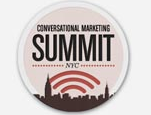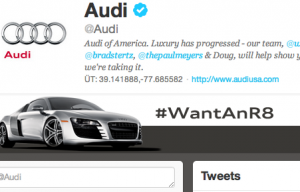Brands
Unlocking the Twitter Marketing Puzzle
Marketers are starting to figure out Facebook (shares=conversions, contests=engagement, ads=questionable value), but Twitter remains much more a mystery to almost everyone who isn’t American Express.
 Luckily, Twitter releases its Palo Alto missionaries into the world to keep marketers from relapsing and saying, “Screw this, I’m buying another commercial during Two and a Half Men.”
Luckily, Twitter releases its Palo Alto missionaries into the world to keep marketers from relapsing and saying, “Screw this, I’m buying another commercial during Two and a Half Men.”
On Tuesday, Joel Lunenfeld, Twitter’s VP of global brand strategy, took the stage at the Conversational Marketing Conference in New York to shed light on how to use the platform to do great things.
He argued that marketing was changing from a canvas of interruption (think TV commercials) to a Twitter-led era where “conversation is the canvas,” the namesake of his talk.
That change involves a transition from planned campaigns to spontaneous opportunism, and Lunenfeld detailed three recent spontaneous campaigns that rocked Twitter’s socks:
1) Brad Keselowski, Nascar Driver
 More than any other professional sports players, Nascar drivers are their own personal brand. Their careers rely on their ability to attract sponsors. The sport is as much about fast, skillful marketing as it is about fast, skillful driving.
More than any other professional sports players, Nascar drivers are their own personal brand. Their careers rely on their ability to attract sponsors. The sport is as much about fast, skillful marketing as it is about fast, skillful driving.
During the Daytona 500 in February, Keselowski combined the two with the first Tweet ever during a NASCAR race:
Fans reacted with shock and awe, and Keselowski kept responding to fans from his car, keeping the conversation going. His sponsors and FOX picked up on it and drove more attention to Keselowski with tweets and by showing him with other drivers, including Dale Earnhardt. Jr., gathered around his phone.
He gained 50,000 followers within the first 30 minutes and over 140,000 followers within a few hours. Now that’s smart marketing.
2) Tide
Keselowski wasn’t the only Twitter winner at the Daytona 500. After driver Juan Pablo’s car crashed into a jet dryer, fuel spilled out and caught fire, Tide raced to the rescue with boxes of detergent to put out the fire.
The Twittersphere blew up, and Tide estimates that it got at least $8 million in earned media from the event. The best part? They weren’t even an official sponsor.
Ludenfeld championed Tide during his talk, but they could have had even more success. @Tide didn’t tweet during the 7 hours after they put out the fire, missing out on the perfect opportunity to champion their #tidepower hashtag campaign (though they did take advantage with numerous tweets and Facebook updates the next day).
Tide did well, but it’s a great reminder that social media management is a 24/7 job. A $50,000 investment in better social media monitoring could have led to millions more in earned media.
3) Audi
 Last year, an Audi fan tweeted @Audi using the hashtag #WantAnR8; the brand brilliantly responded by showing up at her house with an Audi R8 to use for the day and filmed the entire thing. They posted the video and immediately began a contest to win an R8 for the day, and it worked brilliantly, generating over 75,000 uses of the hashtag.
Last year, an Audi fan tweeted @Audi using the hashtag #WantAnR8; the brand brilliantly responded by showing up at her house with an Audi R8 to use for the day and filmed the entire thing. They posted the video and immediately began a contest to win an R8 for the day, and it worked brilliantly, generating over 75,000 uses of the hashtag.
Minimal effort by the brand drove a lot of buzz.
They quickly brought back the contest in March. It will run through October 29, split into four periods with two contest winners in each. It’s going strong, and proof that one tweet can have a long shelf life.
Takeaways
These brands took advantage by seizing the moment (though Tide could have done better). If they had spent days organizing a traditional campaign, they would have left millions in earned media on the table.
Just look at NASCAR driver Dave Blaney. He started trending during the Daytona 500 while in the lead, but he didn’t have a Twitter account to capitalize on the moment.
Conversation is the canvas, and it’s something you can’t plan.

Get better at your job right now.
Read our monthly newsletter to master content marketing. It’s made for marketers, creators, and everyone in between.




